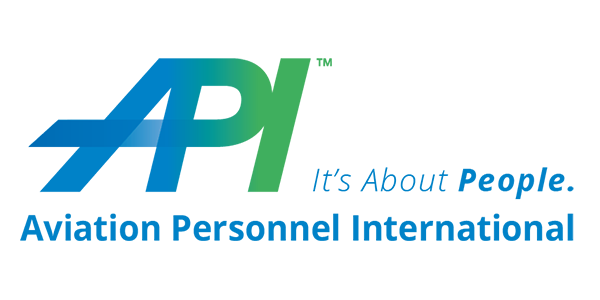
“Business aviation … it’s about people.”
Here at API, this—our company motto—is everything. After all, we’re solidly in the people business, and so our mission is laser-focused on matching the best people with the best companies. The results facilitate the optimal “people experience” on both sides of the employment equation.
We’re often asked by our bizav colleagues for attraction and retention strategies. “How do you attract and retain the best people?” For starters, we suggest that they think like their customer. In other words, like their employee.
Consider this:
- Is she feeling supported, like a valuable member of the team?
- Are you giving him enough opportunities to learn new skills?
- When was the last time you praised them in person or publicly?
One of the biggest differences you can make in your workplace is to proactively understand your staff. If you consider yourself a family, then you must act like one and dial up your empathy.
8 Retention Strategies
Lately, in the face of ongoing talent gap issues, aviation organizations have been ramping up efforts to retain valuable employees.
Following are eight retention strategies to turn your leadership style into a ‘win-win’ for your employees and your company.
- Develop an employee retention strategy
“People leave managers, not companies” is a popular adage. What this means is that it starts at the top—with you, your self-awareness about how you manage, and how well you can fine-tune your leadership skills.
With that, you need to build an employee retention strategy that benefits your people. While doing so won’t entirely stop competition from recruiting your top talent, it definitely can help limit the number of staff looking to leave of their own accord. - Ask questions
Do you know your employees’ interests and motivations, both on the job and away from the hangar? Do they light up when thinking about a certain growth opportunity? Would they appreciate a more flexible work schedule? Do they want to take a development course? Volunteer on an aviation committee? Or tackle an on-the-job learning opportunity?
If you’re not asking questions like these, you’re not fully invested in optimizing your employer/employee relationship. - Create a “just culture”
Lead with compassion by supporting a just culture of fairness, openness and learning. Encourage your team members to speak up and report safety issues, rather than fearing blame. Supporting staff to be open about mistakes helps them—and you—learn valuable lessons. - Create an inclusive workplace—and train on it
Inclusion is about creating a collaborative, supportive and respectful environment for all employees and contractors, regardless of their color, race, gender or sexual orientation. It’s important to let your company leaders know that you will enthusiastically hire for diversity.
But, as a first step, everyone in the department or organization needs to be educated about inclusion. Be sure you’re all on the same page about what this critical concept looks like, in order to create a psychologically safe space for every employee. - Ask yourself: where does ‘retention’ begin? The answer: during your hiring process
Ready to hire? When it’s time for screening, try to gauge a potential employee’s loyalty and whether or not they’ve been devoted to the success of the organizations where they’ve worked. How did they actively contribute to their company and the industry as a whole?
Be sure to assess their preference for professional culture. Will you be a fit for them and will they complement your team? For instance, a creative-minded, positive disruptor may not be well-suited if a culture is conservative toward change. Make an effort to lean into these conversations and don’t be timid about truly getting to know your candidates.
During the interview process, set expectations about scheduling work/life balance, compensation and professional development. Communicating at the get-go will help minimize any issues that might develop with an employee later on. - Measure ‘employee thriving’
You’ve likely heard about “employee engagement,” but did you know that “employee thriving” is the latest approach to measuring employee success? Thanks to workforce changes largely resulting from the pandemic, Microsoft has coined a new phrase. And they’re changing the way they survey their employees.
Now, they’re measuring whether employees feel energized. And whether they feel valued, and if they think their work is valuable. - Create a succession plan
A true mark of leadership is having the foresight to budget for and engage in succession planning. No one will be at their present job forever—not even you. So why would you expect your top employees to stay, contentedly? That’s why you must prepare for turnover, so you’re not caught off guard.
Take the initiative to seek out people within your business aviation organization who have the fundamentals to fill your shoes—as well as those on critical roles in your organization. Here are eight steps to succession-planning ball-rolling. - Offer competitive compensation and benefits
As we know, aviation employers are struggling to retain staff across all aviation disciplines. The ‘gold standard’ (for most people) is compensation.
As pay increases at the airlines and other bizav organizations, people are saying, “Show me the money.” Likewise, employee perks and benefits are often used to lure—and retain—top talent.
Discuss how your compensation goes beyond base salary. Talk up your 401k matching, health insurance, bonus potential, annual merit increases, travel perks, etc. If your company offers employees stock, such as Employee Stock Ownership Plans (ESOPs) or Restricted Stock Units (RSUs), or other wealth-building opportunities, promote them! And be specific. Show your most loyal employees (and potential new-hire candidates) how significantly these compensation elements can impact them—particularly in the long term.
As compensation creativity increases and new elements are entered into the conversation, we find that not all interviewees truly understand concepts such as RSUs, ESOP, etc. Don’t miss a valuable opportunity to educate them with visuals. Numbers talk!
And, if you aren’t yet competitive, conduct due diligence to find out what total compensation looks like at other companies.
The Ball’s in your Court!
We’ve offered a number of very helpful tips and retention strategies to help keep your employees’ content over the long haul.
Now it’s your turn: put a plan in place to help ensure that you become or remain an employer of choice. After all, it will save you time and money by keeping your employees on the team, instead of having to seek out and hire new ones.
